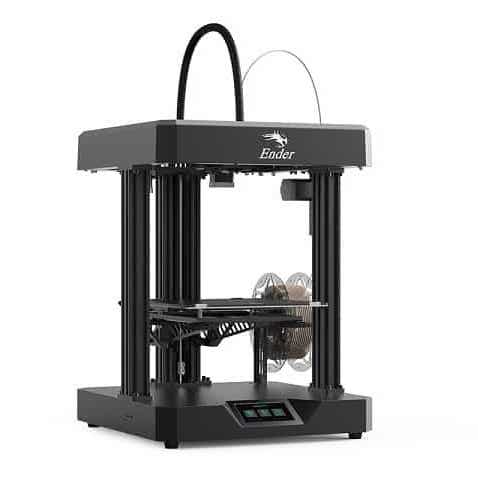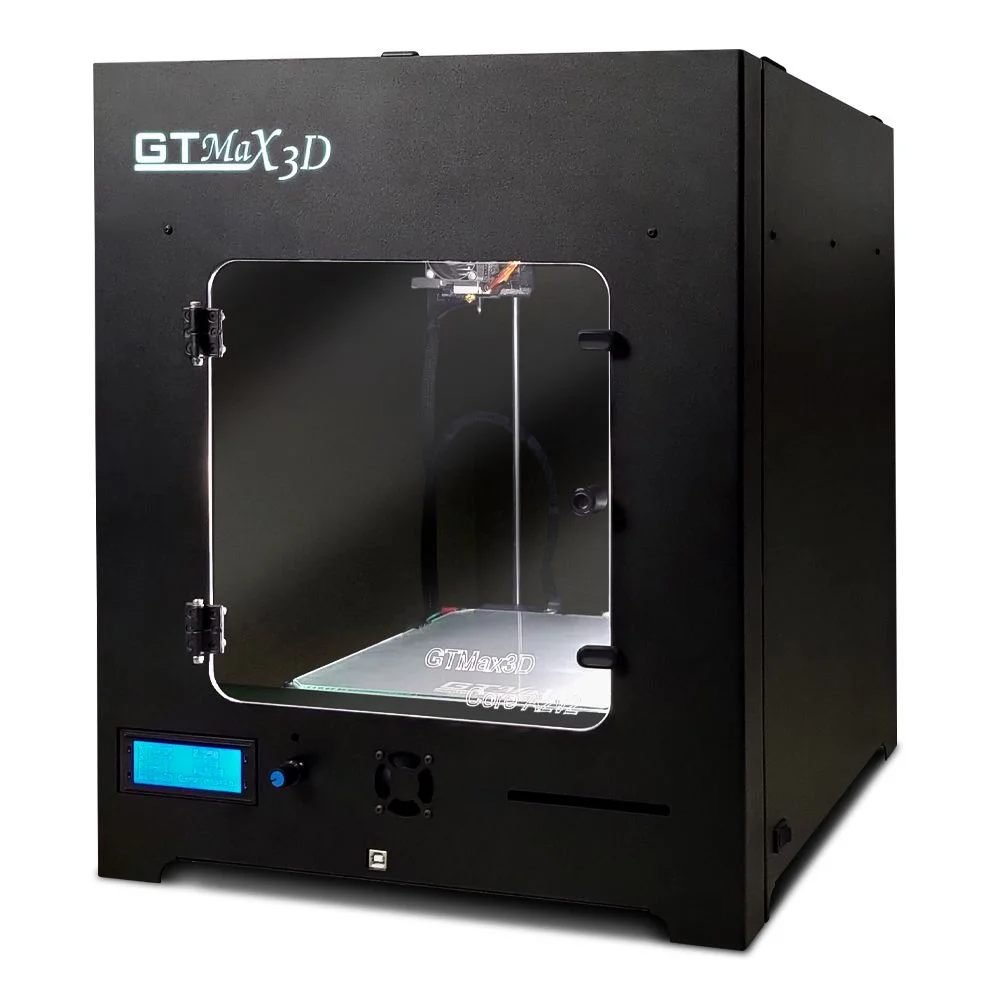Compare Ender 7 vs Core A2V2
Comparison between the best 3D printers
Choose the best 3D printer at the best price. The cheapest 3D printers are here.
Buy a 3D printer here with 3D Fila.
 |
 |
|
| Model | Ender 7[BUY Ender 7] |
Core A2V2 |
| Printing Material | Filament | Filament |
| Buy Filament for Creality 3D Ender 7 | Buy Filament forGTMax Core A2V2 | |
| Estimated price | $429,00 | $684,00 |
| Manufacturer | Creality 3D | GTMax |
| Release Year | 2021 | 2019 |
| Print Volume [mm] | 250x250x300 | 220x220x240 |
| Printer Size [mm] | 430x460x570 | 425x460x512 |
| Weight [kg] | 17,2 | |
| Power Loss Recovery | YES | YES |
| Enclosed printer | NO | YES |
| Bed Leveling | Manual | |
| Filament End Sensor | YES | YES |
| Bed type | Heated | Heated |
| Power supply system | Bowden | Bowden |
| Standard nozzle | 0,4 | 0,4 |
| Maximum Nozzle Temperature [°C] | 260 | 295 |
| Maximum Bed Temperature [°C] | 100 | 135 |
| Maximum printing speed [mm/s] | 250 | 150 |
| Filament holder | YES | YES |
| Camera for supervision | NO | NO |
| Recommended filaments | PLA, PETG, Tritan, Flex, ABS | PLA, PETG, Tritan, Flex, ABS |
| Recommended slicers | Cura, Simplify, Slic3r, IdeaMaker | Cura, Simplify, Slic3r, IdeaMaker |
| Maximum Resolution [mm] | 0,1 | 0,05 |
| Processor | Creality CR-FDM V.2.4.S1_V101 32bits | |
| Display | Display touchscreen 4,3'' | Mono |
| Power Supply | 110/220V / 350W | |
| Connectivity | SD / USB | SD / USB |
| Operating systems | Windows, Mac, Linux | Windows, Mac, Linux |
| Date of registration in the system | 2022-11-04 | 2022-11-12 |
| Release date | 2021 | 2019 |
| Extra features | Crealitys Ender 7 printer offers remarkable print speeds, utilizing CoreXY kinematics for precise and fast movement. With a 250x250x300mm build area, dual direct extruder, and custom hotend, the Ender 7 is capable of printing at high speeds, although quality may suffer on smaller prints. Assembly is relatively straightforward, but the machine is noisy and can get hot. Its true speed potential is most noticeable on larger prints, where it outperforms its competitors. | The GTMax3D ProCore A2v2 is a compact and robust 3D printer with a printing area of ??220 x 220 x 240 mm. It offers high print quality, ranging from 0.05 mm to 0.32 mm. Its features include automatic filament detection and changing, travel speed of up to 300 mm/s, and a heated aluminum bed with a glass top. It has automatic bed leveling with 16 points and an all-metal hotend that reaches up to 298°C. The printer has a carbon steel frame with electrostatic painting, is automatic bivolt and has connectivity via USB and SD card. The Bowden system and core xy kinematics complete its advanced features. |
| Support for multiple colors and materials (AMS and CFS) | NO | NO |
Notes * |
||
| Cost-benefit | 7 / 10 | 6 / 10 |
| Hardware | 2.4 / 10 | 2.5 / 10 |
| Tela | . | . |
| Print volume | 4 / 10 | 3 / 10 |
| Performance | 2 / 10 | 1 / 10 |
| [BUY Ender 7] |
Conclusion |
| In comparing the Creality 3D Ender 7 and the GTMax Core A2V2, several factors come into play, particularly price, functionality, and performance. The Ender 7 stands out for its remarkable speed, leveraging CoreXY kinematics to deliver rapid printing capabilities with a larger build volume. Its straightforward assembly process and features like a dual direct extruder make it attractive for users seeking efficiency. However, its performance in high-speed scenarios might compromise print quality for smaller objects, and it does not come with an enclosed design. On the other hand, the Core A2V2, while more expensive, offers a robust build and exceptional print quality, particularly with finer resolutions down to 0.05 mm. Its enclosed nature allows for better temperature control, which can be beneficial for printing with more complex materials. Features like automatic bed leveling and a high maximum bed temperature demonstrate its capability for versatile printing, though its smaller print volume and slower maximum speeds may limit larger projects. Considering cost-effectiveness, the Ender 7 provides a more appealing price point with commendable performance for various filaments, especially for users who prioritize speed over minute detail on smaller prints. Conversely, the Core A2V2 may justify its higher price through additional features and superior print quality, making it a better choice for those who prioritize precision and the ability to handle a wider range of materials. Ultimately, the best choice depends on the user’s specific needs—whether they favor speed and larger projects or seek precision and a feature-rich experience. |

